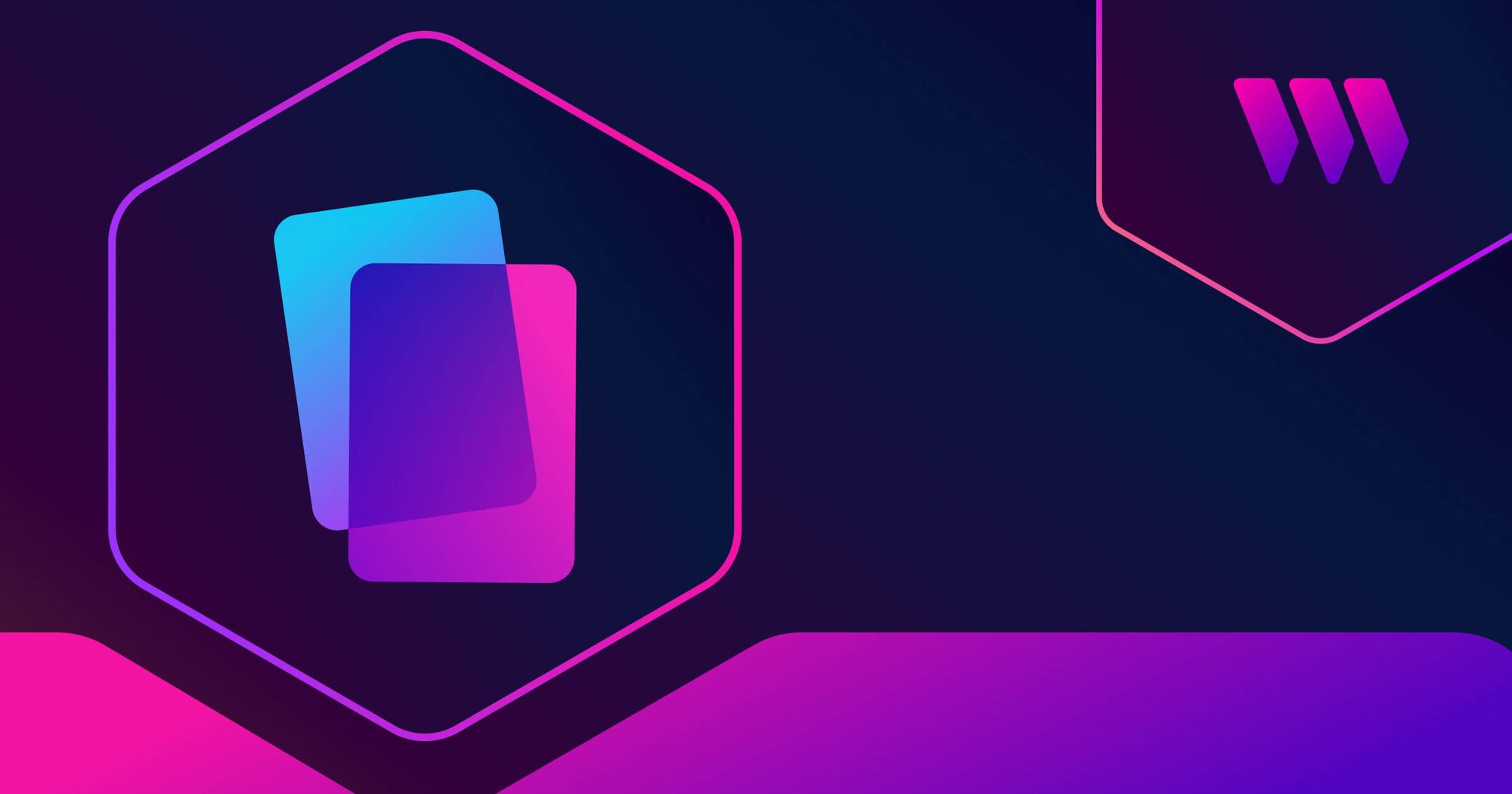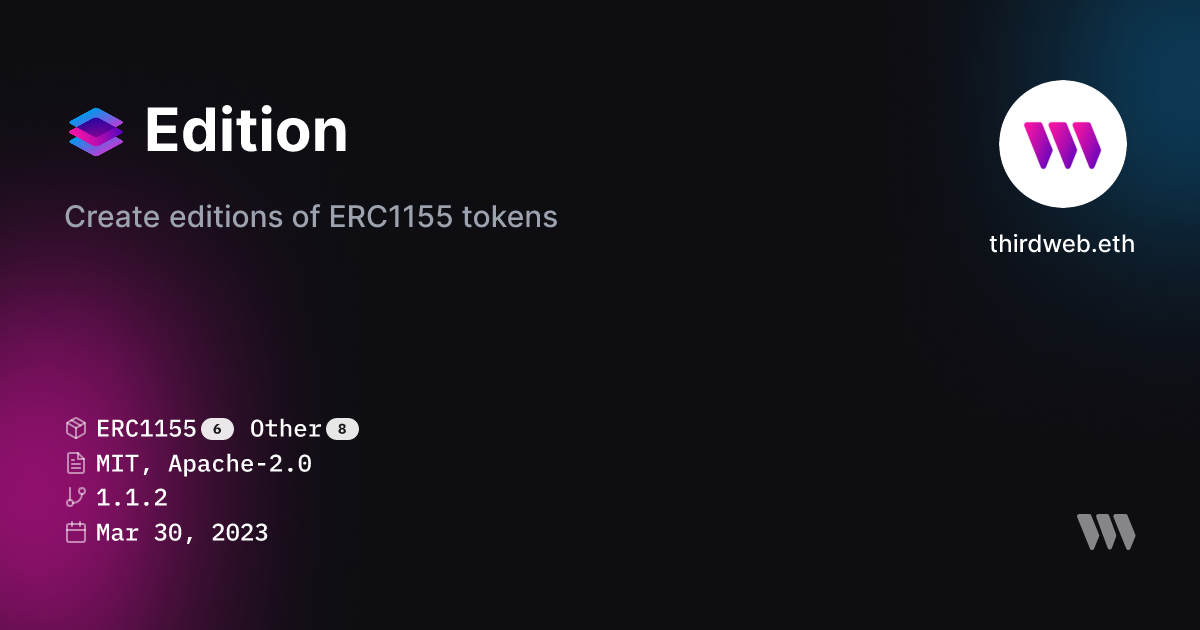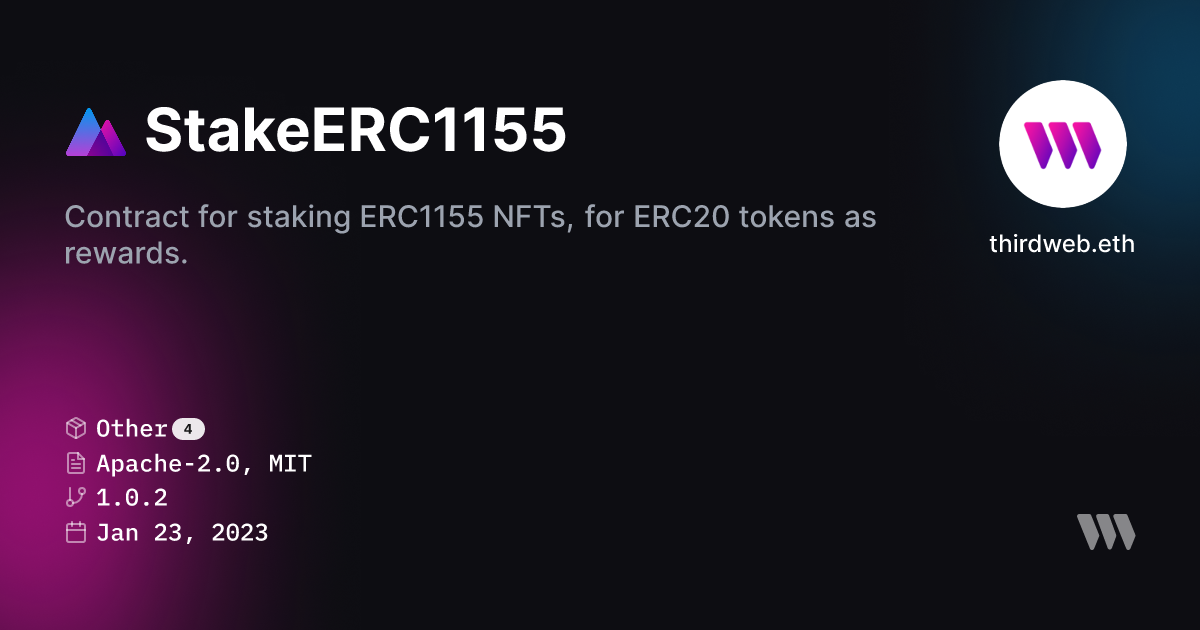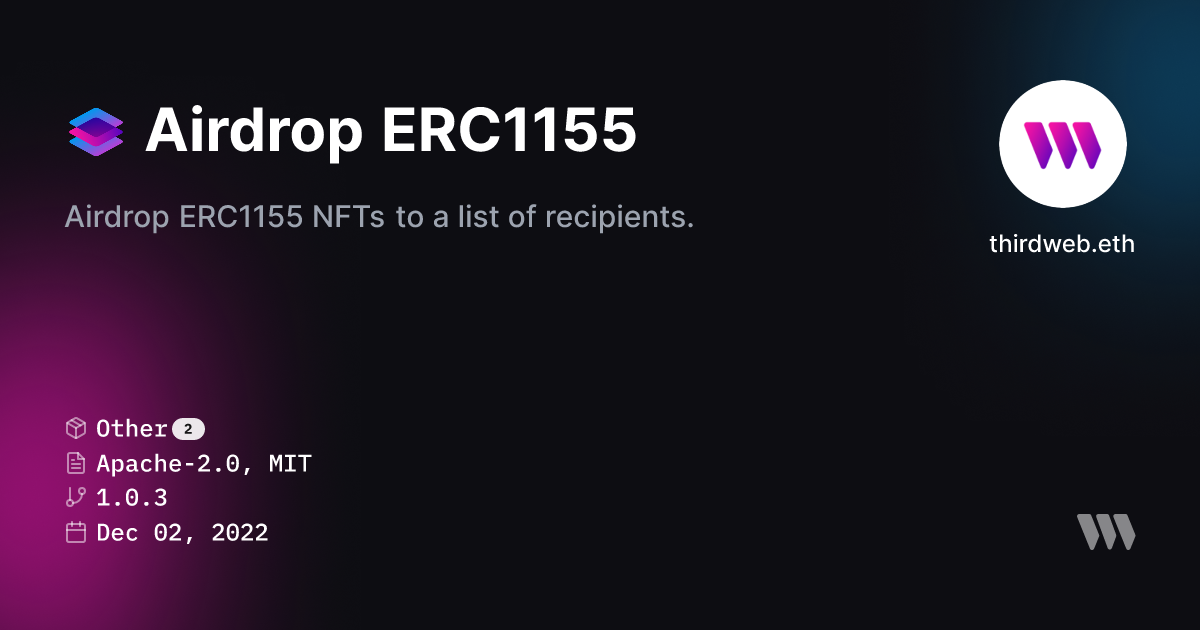What is ERC-1155? The Ethereum Semi-Fungible Token Standard
ERC-1155 is a multi-token standard on the Ethereum blockchain that allows for the creation of both fungible and non-fungible tokens. Learn more.

With the rapid growth of the Ethereum ecosystem, new token standards continue to emerge as game-changing solutions for digital, blockchain-based assets. For anyone building in web3, it's important to understand these token standards, and what capabilities they unlock on the blockchain.
One of the most widely-used standards is ERC-1155: a flexible Ethereum token standard that allows multiple types of tokens (fungible and non-fungible) to be transferred simultaneously in a single transaction, making it more efficient and cost-effective.
In this blog post, we're going to demystify everything you need to know about the ERC-1155 token standard. We'll cover what ERC-1155 is, what its use cases are, examples of projects using ERC-1155, and how to get started with ERC-1155 in smart contract development. Let's dive in.
What is ERC-1155?
ERC-1155 is an Ethereum token standard that combines the functionality of previous standards like ERC-20 (for fungible tokens) and ERC-721 (for non-fungible tokens).
ERC-1155 enables the efficient transfer of both fungible and non-fungible tokens within a single transaction — reducing costs and making it more efficient to create & exchange blockchain-based assets.
Combining the properties of ERC-721 and ERC-20, the ERC-1155 standard has use cases in a variety of applications — such as gaming, creator monetization, & more.
How does ERC-1155 work?
ERC-1155 works by enabling multiple items to be stored in a single smart contract. This means that any number of items can be sent in a single transaction to one or more recipients, reducing transaction costs and complexity.
At the technical level, ERC-1155 has several unique features, such as support for an infinite number of tokens, semi-fungible tokens, safe transfer functions, and the removal of the need to "approve" individual token contracts separately.
You can learn more about the technical details in the Ethereum EIP docs.
Benefits of ERC-1155 for NFTs
- Efficient Transactions: ERC-1155 allows for the transfer of multiple token types (fungible, non-fungible, and semi-fungible) in a single transaction. This efficiency reduces transaction costs and saves time compared to using separate transactions for different token standards.
- Flexibility: ERC-1155 supports an infinite number of tokens within a single smart contract. This flexibility enables developers to create and manage various tokens for different use cases without deploying separate contracts for each token type.
- Reduced Redundancy: Prior to ERC-1155, each token type required its own smart contract, leading to unnecessary redundancy and inefficiency. By allowing multiple token types within a single contract, ERC-1155 reduces the redundancy on the Ethereum blockchain, conserving space and resources.
- Safe Transfers: ERC-1155 has a safe transfer function that allows tokens to be reclaimed if they are sent to the wrong address. This feature provides an additional layer of protection compared to other token standards like ERC-20 and ERC-721.
- Simplified Approvals: With ERC-1155, users no longer need to "approve" individual token contracts separately, resulting in fewer transactions to sign and a more streamlined user experience.
With all of the above benefits, the ERC-1155 token standard is very powerful when it comes to NFTs — and unlocks various use cases across art, gaming, and industries across the board. Let's dive into some of those applications.
5 Use Cases for ERC-1155
- Gaming: ERC-1155 is especially beneficial for the gaming industry, where a multitude of in-game items, such as weapons, skins, and currencies, can be represented by various token types. By using ERC-1155, these items can be stored and traded more efficiently within a single smart contract.
- Decentralized Autonomous Organizations (DAOs): DAOs often require the use of fungible, semi-fungible, and non-fungible tokens for their operations. ERC-1155 is particularly useful for DAOs operating mostly on-chain, as it enables the management of multiple token types in a single contract.
- Digital Art and Collectibles: ERC-1155 can be employed for creating and managing digital art and collectible tokens with different levels of rarity, editions, and properties. Artists and collectors can benefit from the flexibility and efficiency offered by this token standard.
- Tokenized Real-World Assets: ERC-1155 can be used to represent tokenized real-world assets like real estate, precious metals, or intellectual property. These assets can be tokenized as fungible or non-fungible tokens and managed within a single smart contract, making transfers and trades more efficient.
- Reward and Loyalty Programs: Companies can leverage the ERC-1155 standard to develop reward and loyalty programs that offer various token types, such as points, badges, or exclusive digital items. By using a single smart contract, businesses can efficiently manage these tokens and streamline the redemption process.
List of 10 Projects using ERC-1155
- Enjin: Enjin is a blockchain gaming platform and ecosystem that leverages ERC-1155 to create and manage digital assets for games and other virtual experiences.
- Horizon Games: Horizon Games is a gaming company that uses ERC-1155 in its Skyweaver game, a trading card game built on the Ethereum blockchain.
- OpenSea: OpenSea, a popular NFT marketplace, supports ERC-1155, allowing users to trade multiple token types seamlessly.
- Rarible: Rarible is a decentralized NFT marketplace and platform that allows creators and collectors to mint, buy, and sell NFTs using ERC-1155.
- The Sandbox: The Sandbox is a virtual world and gaming platform where users can create, buy, and sell digital assets and experiences using ERC-1155.
- Decentraland: Decentraland is a decentralized virtual world where users can build, explore, and interact with digital assets, all powered by ERC-1155.
- Gods Unchained: Gods Unchained is a blockchain-based trading card game that uses ERC-1155 to manage its in-game assets.
- Axie Infinity: Axie Infinity is a popular blockchain game that uses ERC-1155 to manage its digital collectibles and in-game assets.
- Parallel Alpha: Parallel Alpha is a sci-fi collectible card game using ERC-1155 NFTs to create sets of cards with built-in rarity, scarcity, & quantity.
- SuperRare: SuperRare is an NFT marketplace that focuses on rare and unique digital art, utilizing ERC-1155 to enable seamless trading of various token types.
How to create an ERC-1155 NFT smart contract
Creating an ERC-1155 NFT typically requires writing, testing, and deploying a smart contract using the Solidity programming language.
Alternatively, you can use thirdweb Explore — a library of open-source, pre-built audited smart contracts for various use cases, with extensions & features based on your needs, all deployable in minutes.
Here are all of our ERC-1155 smart contracts, along with descriptions and example use cases.
Edition Drop

The Edition Drop contract is best used when you want to release many NFTs based on the same asset and uses the ERC-1155 Standard, also known as "Semi-Fungible Tokens".
The Edition Drop contract allows you to define the conditions for when and how your users can mint an NFT, including allowlists, release dates, and claim limits.
Use Cases & Examples
- Create NFT Memberships such as our Early Access Cards that you want your users to claim
- Release an item in your game for a limited-time
- Create 100 NFTs based on one art piece, and allow users to claim one per wallet
Edition

The Edition contract is best used when you want to release many NFTs based on the same asset, but you don't want to "drop" or "release" them for your community to claim.
Unlike the Edition Drop contract, the Edition contract does not lazy mint your NFTs. Instead, NFTs are minted immediately when they are added to the collection.
This means you can still transfer the NFTs or sell them on a Marketplace and perform any other actions you would expect to do with an NFT.
For advanced use-cases, the Edition also has signature-based minting capabilities.
Use Cases & Examples
- Create an NFT Collection where each NFT has 100 copies
- Airdrop an NFT to a list of addresses that all use the same asset and metadata
- Create 10 "copies" of your artwork and sell them on a Marketplace
Pack

The pack contract lets you bundle ERC20, ERC721 and, ERC1155 tokens together into ERC1155 NFTs that act as randomized loot boxes. The packs are ERC1155 NFTs themselves, which can have the metadata you'd expect of an NFT, such as a name, image, description, etc.
When a pack is opened, a pre-defined quantity of tokens are randomly selected from the ones that were used to create the packs (that haven't already been selected), and awarded to the opener. The pack NFT is burned as it's opened.
You can configure how many tokens get selected for the pack, how many tokens are in each "unit" (for ERC20 & ERC1155 tokens - one unit could be multiple tokens), and how many units are in each pack.
Use Cases & Examples
- Create randomized NFT packs
- Run a randomized raffle where some users open a winning ticket
- Reward your community with token gift boxes
ERC-1155 Staking

This contract allows users to stake their ERC-1155 NFTs and get ERC-20 tokens as staking rewards. Contract admin should set the NFT and Reward-token addresses during deployment.
Staked NFTs are stored inside the contract and rewards are calculated for the amount of time these NFTs were staked. These rewards are then transferred to stakers upon claiming.
Airdrop ERC-1155

Airdrop ERC1155 NFTs to a list of recipients, where these recipients are not expected to individually claim their airdrop; they just receive it in a transfer.
Marketplace
A Marketplace is a contract where you can buy and sell NFTs, such as OpenSea or Rarible.
The Marketplace contract allows users to list NFTs for direct sale or auction. Other users can place offers/bids or buy the NFTs for the specified amount in the listing.
The marketplace can be configured to only allow certain users to list NFTs for sale, or allow any user to list NFTs for sale.
Use Cases & Examples
- Sell your NFTs on your marketplace
- Create auctions where the highest bidder, after a certain period, wins the NFT
- Create an open marketplace where any user can list NFTs for sale, like OpenSea.
Frequently Asked Questions (FAQs)
Why use ERC-1155 vs. ERC-721 or ERC-20?
ERC-1155 is a multi-token standard that can represent both fungible and non-fungible tokens, while ERC-20 is for fungible tokens and ERC-721 is for non-fungible tokens.
How does ERC-1155 improve efficiency?
ERC-1155 allows for the transfer of multiple token types in a single transaction, reducing transaction costs and increasing efficiency.
Can ERC-1155 tokens be traded on decentralized exchanges?
Yes, ERC-1155 tokens can be traded on DEXs that support this standard. Some popular DEXs with ERC-1155 support include OpenSea and Rarible.
How do I mint ERC-1155 tokens?
Minting ERC-1155 tokens requires the use of a smart contract that adheres to the ERC-1155 standard. You can create your own smart contract or use an existing one, such as thirdweb's ERC-1155 smart contract. Once the smart contract is deployed on the Ethereum network (or any EVM-compatible blockchain), you can interact with it to mint new tokens.
Can I use ERC-1155 tokens in decentralized apps (dApps)?
Absolutely! ERC-1155 tokens can be integrated into a wide variety of dApps, ranging from games and virtual worlds to decentralized finance (DeFi) platforms. The versatility of ERC-1155 tokens makes them suitable for a broad range of use cases, and developers can create unique and innovative applications using this token standard.
Are there any limitations to the ERC-1155 token standard?
While the ERC-1155 token standard offers several advantages over its predecessors, it is not without limitations. For instance, the increased complexity of managing both fungible and non-fungible tokens within a single contract can make it more challenging to develop and maintain. Additionally, as a relatively new standard, some platforms and services may not yet support ERC-1155 tokens, although this is likely to change as its adoption grows.
Concluding thoughts: The future of ERC-1155 NFTs
The ERC-1155 token standard is a powerful and flexible standard that enables the efficient management and transfer of both fungible and non-fungible tokens in a single contract — driving innovation and adoption in various industries and applications such as gaming, virtual worlds, and decentralized finance.
We hope this blog post has helped you better understand what the ERC-1155 token standard is, what its use cases are on the blockchain, and how you can get started with ERC-1155 smart contracts.
If you have any questions, join 33,000+ other builders in our Discord community, or reach out to the team directly for more info on how to get started with ERC-1155.
And if you want to start building web3 apps with ERC-1155 smart contracts, get started with thirdweb’s web3 tools & SDKs — they’re free!
